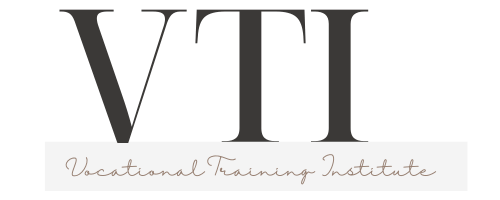Are you looking for ways to ensure fair and accurate evaluation? Innovations in assessment offer the solution you need.
By embracing adaptive testing, competency-based assessments, and harnessing technology for objective evaluation, we can revolutionize the way we measure learning outcomes.
With innovative question formats and gamification, assessment becomes engaging and enjoyable.
Furthermore, the integration of AI allows for fair and unbiased evaluation, tailored to individual needs.
Join us as we explore these cutting-edge approaches to assessment, ensuring equity for all learners.
Key Takeaways
- The rise of adaptive testing
- Competency-based assessments
- Harnessing technology for objective evaluation
- Moving beyond multiple choice question formats
The Rise of Adaptive Testing
You should consider the benefits of adaptive testing in improving evaluation accuracy and fairness.
Adaptive testing, a key component of adaptive learning, is a method of assessment that tailors the difficulty of questions to match the individual abilities and knowledge of the test taker. Traditional assessment methods often rely on a fixed set of questions that don’t account for the diverse range of skills and knowledge among test takers. This can result in inaccurate evaluations, with some individuals being over or under-assessed.
Adaptive testing, on the other hand, uses algorithms to dynamically select questions based on the test taker’s responses. This allows for a more personalized and precise evaluation, ensuring that each individual is challenged at an appropriate level. By adapting the difficulty of questions in real-time, adaptive testing can accurately measure a test taker’s true abilities, providing a more accurate representation of their knowledge and skills.
Furthermore, adaptive testing promotes fairness by mitigating the impact of test anxiety and test fatigue. By tailoring the difficulty of questions, adaptive testing reduces the likelihood of individuals becoming overwhelmed or disengaged during the assessment. This can lead to more reliable results, as test takers are able to perform at their best without being hindered by external factors.
Competency-Based Assessments: A New Approach
To ensure fair and accurate evaluation, it’s important to integrate competency-based assessments into the assessment process. Competency-based evaluation is a new approach that focuses on measuring a person’s ability to apply knowledge and skills in real-world contexts. This form of assessment is gaining popularity in education and professional settings because it provides a more comprehensive understanding of an individual’s capabilities.
Here are three reasons why competency-based assessments are a valuable addition to the evaluation process:
-
Personalized Learning: Competency-based assessments allow for personalized learning experiences by identifying individual strengths and weaknesses. This approach tailors instruction to meet the specific needs of each learner, ensuring that they’re challenged and supported appropriately.
-
Mastery of Skills: Unlike traditional assessments that focus on memorization and recall, competency-based assessments emphasize the mastery of skills. By evaluating a person’s ability to apply knowledge in practical situations, these assessments provide a more accurate measure of competence.
-
Real-World Relevance: Competency-based assessments mirror real-world scenarios, making them more meaningful and applicable. This approach ensures that individuals are prepared to navigate complex challenges and contribute effectively in their chosen fields.
Integrating competency-based assessments into the assessment process promotes fairness and accuracy by focusing on practical application and individualized learning. By embracing this new approach, we can better evaluate and support the development of competencies needed for success in today’s dynamic world.
Harnessing Technology for Objective Evaluation
Utilizing technology can revolutionize the evaluation process, providing objective and accurate assessments. One way to achieve this is by harnessing data and implementing automated grading systems. These technologies have the potential to streamline the evaluation process and reduce bias, making it more fair and efficient.
Harnessing data enables educators to collect and analyze vast amounts of information about student performance. This data can be used to identify patterns, trends, and areas where students may be struggling. By utilizing this information, educators can tailor their instruction to meet the specific needs of each student, ensuring a more personalized learning experience.
Automated grading systems, on the other hand, can significantly reduce the time and effort required to evaluate student work. These systems use algorithms to assess assignments, providing immediate feedback and eliminating the need for manual grading. This not only saves time for educators, but also ensures consistency and objectivity in the evaluation process.
However, it’s important to note that technology shouldn’t replace human judgment entirely. While automated grading systems can handle objective assessments like multiple-choice questions, more complex assignments may still require human intervention. Educators play a vital role in interpreting and evaluating student work, providing valuable insights and feedback that can’t be replicated by technology alone.
Moving Beyond Multiple Choice: Innovative Question Formats
With the use of innovative question formats, educators can expand assessment beyond the limitations of multiple choice, providing a more engaging and comprehensive evaluation experience.
By incorporating adaptive learning techniques and alternative assessments, educators can create assessments that better align with the diverse needs and abilities of students.
-
Adaptive Learning: Adaptive learning technology allows assessments to adjust in real-time based on a student’s responses, providing personalized feedback and tailored questions. This not only promotes deeper learning but also ensures that students are appropriately challenged and supported.
-
Performance-based Assessments: Moving away from traditional multiple-choice questions, performance-based assessments require students to demonstrate their knowledge and skills through real-world tasks. This can include projects, presentations, and simulations, enabling students to apply their learning in authentic contexts.
-
Open-ended Questions: Open-ended questions prompt students to provide detailed responses and explanations, allowing educators to gain insights into students’ thought processes and understanding. These questions require higher-order thinking skills and encourage critical thinking, problem-solving, and creativity.
Gamification in Assessment: Making Learning Fun and Engaging
You can incorporate gamification into assessments to make learning more fun and engaging. Gamifying evaluation involves adding elements of games, such as competition, rewards, and challenges, to the assessment process. This approach has gained popularity in recent years due to its ability to increase student motivation and involvement in learning.
One way to make learning interactive through gamification is by using game-based assessments. These assessments present questions and tasks in the form of games, allowing students to actively participate and apply their knowledge in a simulated environment. For example, a language learning assessment can be turned into a game where students have to interact with virtual characters and solve language puzzles to progress through levels.
Another way to gamify evaluation is by incorporating points, badges, and leaderboards. By awarding points for correct answers, badges for achievements, and displaying leaderboards to show student rankings, learners are motivated to perform better and compete with their peers. This not only makes the assessment process more engaging but also fosters a sense of accomplishment and healthy competition among students.
Research has shown that gamification in assessment can have positive effects on student learning outcomes. A study by Sailer et al. (2017) found that students who participated in a gamified assessment performed better, showed higher levels of engagement, and reported increased enjoyment compared to those who took traditional assessments.
Performance-Based Assessments: Evaluating Skills in Real-World Contexts
You can evaluate skills in real-world contexts through performance-based assessments. These assessments provide a more accurate and meaningful measure of an individual’s abilities by simulating real-life scenarios.
Here are three reasons why performance-based assessments are effective in evaluating performance in real-world scenarios:
-
Authenticity: Performance-based assessments allow individuals to demonstrate their skills and knowledge in a context that closely resembles real-world situations. By creating scenarios that mirror the challenges and demands of the workplace, these assessments provide a more accurate representation of an individual’s ability to apply their skills in practical settings.
-
Transferability: Performance-based assessments focus on evaluating an individual’s ability to transfer their skills and knowledge from the classroom to real-world scenarios. This ensures that individuals can effectively apply what they’ve learned in practical situations, making these assessments highly relevant and applicable to their future careers.
-
Holistic Evaluation: Unlike traditional assessments that rely solely on written exams or multiple-choice questions, performance-based assessments take into account a wide range of skills, including problem-solving, critical thinking, communication, and teamwork. This comprehensive evaluation provides a more holistic view of an individual’s abilities, allowing for a more accurate assessment of their performance in real-world scenarios.
Embracing AI for Fair and Unbiased Evaluation
Utilizing AI technology, organizations can now achieve fair and unbiased evaluation in their assessments. By embracing AI for unbiased grading, organizations are enhancing fairness in evaluation processes. AI has the potential to overcome human biases and inconsistencies that may arise in traditional assessment methods.
One way AI promotes fairness in evaluation is through its ability to standardize scoring. Human graders may have different interpretations and subjective biases, leading to inconsistent evaluation. AI algorithms, on the other hand, can be programmed to follow predefined criteria and evaluate responses objectively. This ensures that all candidates are assessed based on the same standards, eliminating any potential bias.
Furthermore, AI can help mitigate bias by anonymizing the evaluation process. By removing identifying information from the submitted work, such as the candidate’s name, gender, or background, AI algorithms can assess responses solely on their merits. This reduces the risk of unconscious biases influencing the evaluation.
Another advantage of AI in evaluation is its ability to analyze large volumes of data efficiently. This allows for more comprehensive and accurate assessment of candidates’ performance. AI algorithms can identify patterns and trends across multiple assessments, providing valuable insights that can further enhance the fairness and accuracy of evaluations.
Personalized Assessments: Tailoring Evaluation to Individual Needs
To ensure fair and accurate evaluation, personalized assessments are crucial in tailoring the evaluation process to individual needs.
By providing customized feedback for growth, educators can address the specific areas where students excel and areas that require improvement.
Additionally, personalized assessments take into account diverse learning styles, allowing for a more inclusive and equitable evaluation process.
This approach recognizes that each student is unique and requires individualized support to reach their full potential.
Customized Feedback for Growth
As you strive for growth, it’s important to consider personalized assessments that tailor evaluation to your individual needs. Customized feedback plays a crucial role in facilitating personal growth and development. Here are three reasons why personalized assessments are essential for your progress:
-
Targeted Areas: Personalized assessments allow you to focus on specific areas in need of improvement. By identifying your strengths and weaknesses, you can receive feedback that targets those specific areas, enabling you to make meaningful progress.
-
Individualized Approach: Each person has unique strengths, weaknesses, and learning styles. Personalized assessments take these individual differences into account, providing feedback that aligns with your specific needs and preferences. This tailored approach enhances your understanding and application of the feedback received.
-
Motivation and Engagement: Customized feedback fosters motivation and engagement by highlighting your progress and areas of improvement. When feedback is personalized to your individual needs, it becomes more meaningful and encourages you to continue striving for growth.
Addressing Diverse Learning Styles
To address your diverse learning styles, we can tailor evaluations to your individual needs. One way to accommodate different learning styles is by incorporating haptic learning techniques into assessments.
Haptic learning refers to the process of learning through touch and physical interaction. For example, instead of relying solely on written tests, we can provide hands-on activities that allow you to engage with the material in a tactile manner. This approach is particularly beneficial for kinesthetic learners who learn best through physical experiences.
Additionally, we can cater to visual learners by incorporating visual elements into assessments. This can include using diagrams, charts, or graphs to present information or asking you to create visual representations of your understanding.
Authentic Assessments: Connecting Evaluation to Real-Life Situations
Authentic assessments, which connect evaluation to real-life situations, offer several benefits in the assessment process.
Firstly, they provide a more accurate measure of practical skills and competencies that individuals need in real-world settings. Rather than relying solely on theoretical knowledge, authentic assessments require individuals to apply their knowledge and skills to solve real-life problems or complete tasks that mirror actual work scenarios.
This type of assessment not only provides a more meaningful and relevant evaluation but also prepares individuals for the challenges they’ll encounter in their future careers.
Real-World Assessment Benefits
Are you ready to explore how real-world assessment can enhance your evaluation process by connecting it to practical situations? Real-world assessment offers numerous benefits that can improve the accuracy and fairness of evaluations. Here are three key advantages of incorporating real-world assessment into your evaluation process:
-
Increased relevance: Real-world assessments provide a practical evaluation of skills and knowledge that are directly applicable to the tasks and challenges individuals will face in their professional lives. This ensures that the evaluation measures are aligned with real-world application and can accurately predict performance in practical settings.
-
Enhanced motivation: By connecting evaluations to real-life situations, individuals are more motivated to engage in the assessment process. Authentic assessments tap into individuals’ intrinsic motivation by offering meaningful and relevant tasks, resulting in higher levels of engagement and effort.
-
Improved transferability: Real-world assessments assess individuals’ ability to transfer their skills and knowledge to new situations. This type of evaluation promotes deeper learning and critical thinking, enabling individuals to apply their understanding in different contexts and adapt to changing circumstances.
Assessing Practical Skills
When assessing practical skills, it’s important to connect the evaluation to real-life situations in order to accurately gauge an individual’s abilities. While assessing theoretical knowledge is essential, practical evaluation techniques provide a more comprehensive understanding of an individual’s proficiency in applying their knowledge to real-world scenarios.
Authentic assessments, which replicate real-life situations, allow individuals to demonstrate their practical skills in a more realistic and meaningful way.
Practical evaluation techniques involve creating tasks or scenarios that closely resemble the tasks individuals may encounter in their professional or personal lives. This could include role-playing exercises, simulations, or hands-on activities. By engaging individuals in these real-life situations, assessors can observe how they navigate through challenges, utilize problem-solving skills, and effectively apply their theoretical knowledge.
Moreover, connecting evaluation to real-life situations enhances the validity and reliability of the assessment process. It ensures that individuals aren’t only tested on their ability to recall information but also on their ability to apply that knowledge in practical settings. This approach provides a more accurate representation of an individual’s skills and competencies.
Addressing Bias in Assessment: Ensuring Equity for All Learners
You can address bias in assessment by implementing strategies that ensure equity for all learners. Promoting inclusive assessment practices not only helps create a fair evaluation system but also fosters a more supportive and inclusive learning environment.
Here are three strategies to address bias in assessment:
-
Design culturally responsive assessments: Take into account the diverse backgrounds and experiences of learners when designing assessments. Ensure that the content, language, and examples used in assessments are culturally sensitive and inclusive. This helps prevent cultural bias from influencing students’ performance.
-
Provide clear and transparent assessment criteria: Clearly communicate the assessment criteria to learners, ensuring that they understand what’s expected of them. By providing clear guidelines, learners from different backgrounds can better understand how their work will be evaluated, reducing the potential for bias.
-
Use multiple assessment methods: Incorporate a variety of assessment methods to capture different aspects of learning. By using a mix of written assignments, presentations, group projects, and practical demonstrations, you can provide opportunities for students to showcase their abilities in different ways. This helps prevent bias that may arise from relying solely on one assessment method.
Conclusion
You have journeyed through the realm of assessment innovations, witnessing the rise of adaptive testing and competency-based evaluations.
Technology has been harnessed to provide objective and engaging assessments, beyond the confines of multiple-choice questions. Gamification has breathed life into learning, while AI ensures fair and unbiased evaluations.
Personalized assessments cater to individual needs, and authentic assessments connect evaluation to real-life situations. Bias is being addressed, ensuring equity for all learners.
These innovations have transformed the assessment landscape, paving the way for fair and accurate evaluations.




